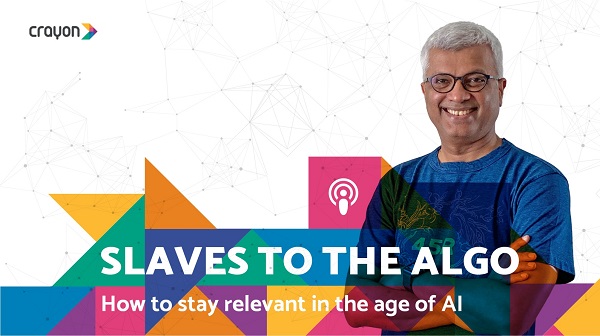I interviewed Amir Orad, an entrepreneur, thought leader and CEO of Sisense, one of the leading business intelligence platforms that allows you to simplify complex data sets and make big data insights accessible for startups and small companies.
In his career spanning more than 25 years, Amir has led and scaled businesses by orders of magnitude in both startup and public-company settings, and has overseen multiple exits and M&As. Before Sisense, he was the chief exec at Actimize, a financial crime and analytics software leader that monitors billions of transactions for the world’s top institutions. There, he led the company’s business functions since it was a $30 million entity, first as EVP and later as President and CEO, and grew the business six-fold with Wall Street reported revenue nearing a $200 million run rate.
Prior to Actimize, he was co-founder and CMO of Cyota Inc, a cyber analytics-powered company that was acquired by RSA Security in 2005. He came to cybersecurity from the world of cyberwarfare; having been recruited while still in high school by the elite 8200 division of the Israeli army Intelligence Corps, which brings together the best minds in Israel to build cutting-edge technologies to protect national security.

Amir Orad, an entrepreneur, thought leader and CEO of Sisense.
You can read the complete interview below:
1. Sisense was in the news recently when it has been recognized as a leading Visionary in the Gartner Magic Quadrant for Analytics and Business Intelligence Platforms report for 2019. Can you tell us some of the key visions that drive Sisense to be one of the top end-to-end BI and analytics platforms?
Sisense is about constant innovation and customer delight – and we do exactly that. Over the past 12 months, for example, we have introduced 3 key innovations, each of them radically changing the way analytics can and should be engaged:
- Sisense Boto – is the first analytics chatbot of its kind – it is completely open to anyone who has one of the most common messaging apps, such as Facebook Messenger, Skype or Slack and allows them to ‘friend’ it. Once they add the chatbot to their contact list they can ask it to apply advanced data science and machine learning to their own CSV data sets and receive an immediate analysis of all the hidden insights contain in their own data.
- Sisense BloX – offers a paradigm shift in how users interact with analytics. Now, it is so much more than a limited choice between bar charts or pie charts. Sisense BloX offers users to convert their data into html5 applications which are embeddable anywhere and understood by everyone. Think of seeing your vacation resort options analytics displayed with short video cycles of each gorgeous beach you consider.
- Sisense Hunch – is the final and most impressive innovation we delivered in 2018. Sisense Hunch opens up a completely new category of Data Cognition Engines, where lean neural networks are replacing huge datasets by learning the patterns in the data and ‘understanding’ it. Think of the difference between citing the Harry Potter books verbatim and being able to describe the plot and main actions taken by every major character. The former being an impossibility and the latter simple fandom joy. Similarly, Sisense Hunch replaces 500GB of datasets with 2MB of a neural network containing all the important aspects of the data.
But innovation by itself is not enough – we provide all of that with superb focus on the end-game, our customer’s success . We were very happy to see Gartner naming us #1 in the last MQ in the areas of customer experience and product benefits, proving that our work here is making an impact.
2. Often with BI tools, it can feel like comparing apples to oranges as each tool is so unique and complex. And there are plenty of BI applications out there. Can you tell us some of the key factors that make Sisense unique and different from other tools?
We see embedding as the future of analytics, and the future of Enterprise. Any internal operations or product – hardware, software, or service – provided in the next few years is going to need embedded insights that highlight how it is used, and how others are using it. If you operate without it, you won’t be for much longer. We’ve made embedded analytics a big focus at Sisense, and that’s why more than half of our business is driven by the customer using Sisense to embed their analytics within their products and services. We’re the unchallenged leaders in the space.
We were also a pioneer with the introduction of artificial intelligence into all levels of business intelligence. We were the first to introduce the use of Natural Language Processing (NLP) in interacting with data with the use of the amazon Echo (Alexa) and other smart speaker-based interfaces in 2016.
AI initiatives already in progress at the firm, include on top of the previously mentioned Sisense Boto and Sisense Hunch also Intelligent Data Preparation. Data Prep is the most onerous stage of any data driven system and so we decided to leverage the latest technology advancements in machine learning and artificial intelligence to offer smart, machine learning-driven recommendations during the data prep process. This meshes up nicely with our customer satisfaction obsession by helping guide users through the data preparation process offering them recommendations for use of specific fields to easily ‘mash-up’ data sources.
These and others are all part of our broader goal to empower the builders of analytic apps, while giving users the ability to extract insights using the latest technology innovations to their benefit.
3. Data analytics is evolving and today, there is a lot of emphasis on intelligent automation, machine learning, augmented analytics, natural language processing and adoption of cloud. Can you talk about the new opportunities and challenges in keeping up with the contemporary business requirements for accessibility, agility and deeper analytical insights?
This is an interesting question. Granted, we were one of the first BI and Analytics vendors to introduce AI, machine learning and NLP into the field as early as 2016, with the introduction of conversational analytics via Amazon Echo or IoT through smart lights. Having said that, we feel that the term we coined of Augmented Analytics has been hijacked and hyped lately. Everyone these days is speaking about releasing yet another ‘machine learning’ feature for insight extraction and conversational interaction. However, when you go and speak with customers in the field they treat all of this innovation as a mere fad that is yet to deliver tangible value to them. The more we think about the problems customers face these days the more we are convinced the true value lays with data and data handling and not with flashy widgetry and AI wizardzy.
4. Do you believe the “shift from BI to AI” has happened? Or there isn’t any fundamental difference?
I would say that the “shift from BI to AI” has begun. We still have ways to go, quite frankly. There have been major strides in how AI has started to take data-driven business insights off the dashboard, and integrate them into our everyday lives. This process is far from complete. We see the future of BI as involving “invisible analytics” – meaning, there won’t be dashboard, graphs, or charts. Rather, users will receive critical information at the moment it’s needed, unobtrusively, in the format and channel that they prefer. That’s the ultimate promise of AI in business intelligence. We’re moving quickly towards that goal but we are not there yet, and nobody is either.
5. Can you share some of the emerging trends in the BI and analytics market today?
Aside from the trend towards greater integration of AI at all levels of the product, we see BI becoming the catalyst for digital transformation in the enterprise, meaning, analytics will become the vehicle for companies being able to monetize their data. We’re not just talking about research companies. Automotive firms, law firms, and accounting firms are many others are going to leverage analytics to move beyond adding value to their products, and will become products themselves.













